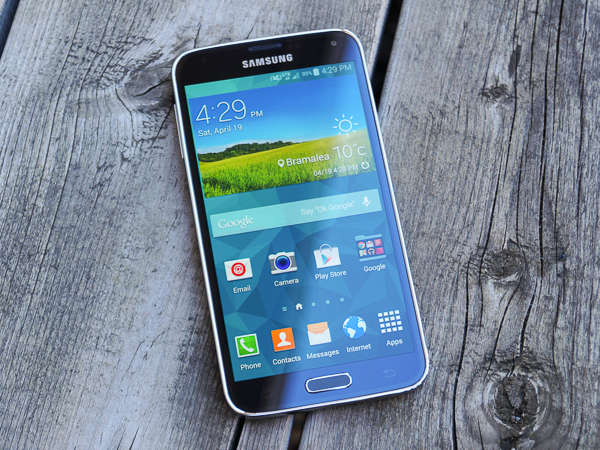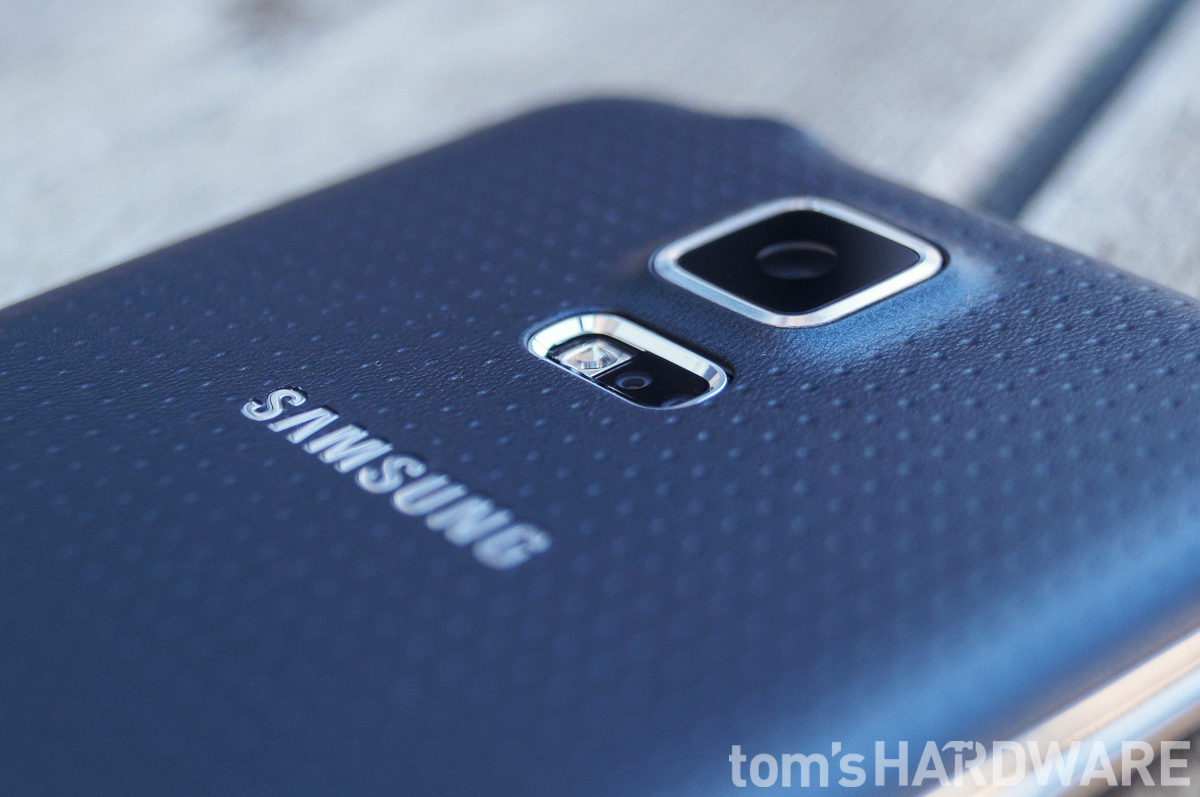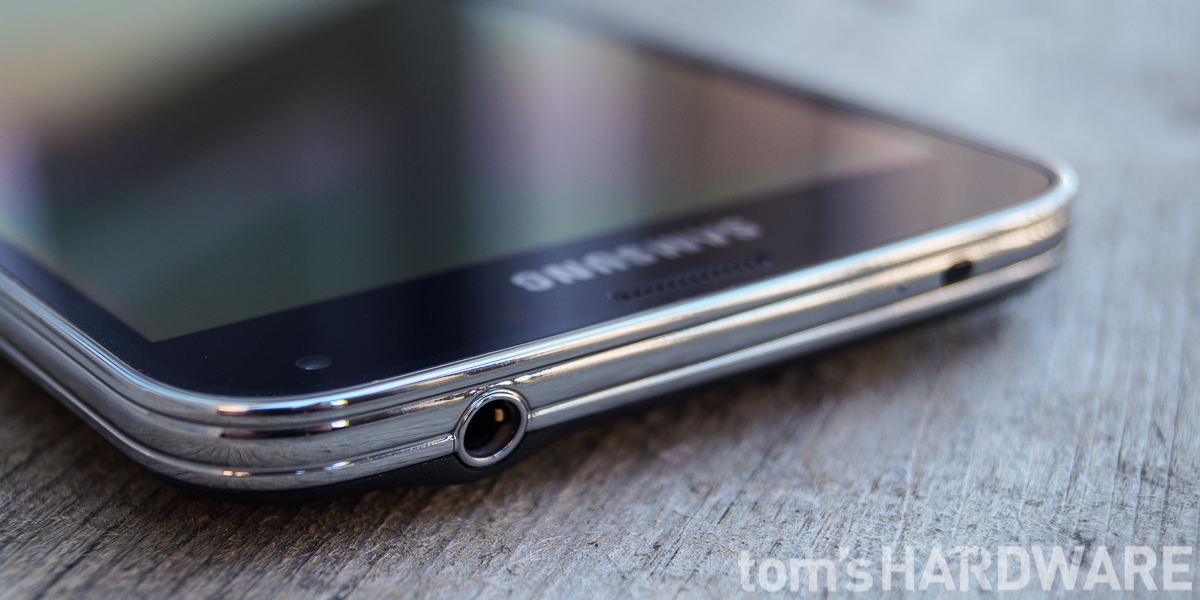Samsung Galaxy S5 Smartphone Review
Will the gravity well from Galaxy S5 capture your interest, or will you streak past with escape velocity?
Why you can trust Tom's Hardware
Did A New Star Form In Galaxy S5?
The S5 is a brown dwarf, failing to achieve star status in Samsung's Galaxy. Sure, it's a definite improvement over the Galaxy S4, and a decent smartphone, but it just does not stand out amongst the brighter stars in its celestial neighborhood.
Packed inside the S5 is an impressive list of hardware: Snapdragon 801 SoC, 2GB RAM, 16MP camera, microSD support, removable battery, all topped off with a 5.1-inch 1080p SAMOLED screen. It even includes support for 802.11ac Wi-Fi, Bluetooth 4, NFC and Cat. 4 LTE; all of the important wireless communication standards in use today. The only issue is that this is basically the same list of features the S5's competitors have. Samsung did add a fingerprint scanner, which, after some software tweaks, works pretty well, falling just shy of Apple's Touch ID in accuracy and convenience. The only other semi-unique hardware feature is IP67 dust and water resistance, a feature shared by Sony's Xperia Z2 and now Z3. The Xperia line offers much of the same hardware, but in a more attractive package with better cameras and audio, although the batteries aren't removable.
Camera performance is reasonably good. The S5's strengths are the easy-to-use UI, excellent HDR mode, high level of detail when shooting in good light, excellent color reproduction and super-fast phase detection autofocus. We recommend keeping HDR mode on at all times because the S5 doesn't handle scenes with much dynamic range well with it turned off. Also, Samsung's ISOCELL sensor, despite the marketing claim of improved low-light performance, really struggles in poor lighting conditions. To compensate, Samsung uses overly aggressive noise reduction algorithms that destroy detail, blend elements together and produce "soft"-looking images. There's still no substitute for pixel size when shooting in low light.
Performance is comparable to other flagship phones, but is not really faster than any of them. The S5's internal NAND storage performance is also rather low, although this was really only noticeable during game loading screens. Also, like all of the other all-plastic phones, the S5 experiences thermal throttling when stressing the GPU, limiting its ability to play the most demanding Android games.
Samsung did a good job cleaning out the excess features and fluff from its latest TouchWiz ROM. Without the extra clutter, the interface is easier to navigate and more responsive than previous versions. TouchWiz also gives you complete control over the organization of the app drawer and a customizable notification shade. While a 5.1-inch screen isn't big by today's standards, it's still impossible for most people to use with only one hand. Fortunately, the S5 includes a one-handed mode that brings the entirety of the screen within reach, including the navigation and volume buttons. Samsung makes good use of the proximity sensor on the front with its "Air browse" feature, allowing you to scroll through lists with a wave of your hand. Too bad it only works in a handful of apps. One thing that TouchWiz lacks is granular control over app permissions.
The design of the Galaxy S5, which isn't much different than the S4, already looked dated the day it launched. Thicker than average bezels, a screen with a gray-green tint when turned off and a chrome ribbed band around its perimeter combine to create the least-attractive flagship phone currently available. The soft-touch plastic on the back at least feels nice and provides ample grip.
Expectations for the S5 were astronomical, but it quickly fell back to Earth after launch day. Samsung's reputation for using cutting-edge hardware and packing in features finally exceeded what it was able to deliver, which is a decent phone that fails to distinguish itself amongst stiff competition. If you specifically need a smartphone with a removable battery, fingerprint scanner and IP67 protection, then the S5 is for you. If you can forgo at least one of those features, there are more compelling phones to consider.
Get Tom's Hardware's best news and in-depth reviews, straight to your inbox.
>> See the Reader Ratings and Advice for the Galaxy S5
Current page: Did A New Star Form In Galaxy S5?
Prev Page Results: Battery And Throttling-
grumpigeek My Galaxy S5 in in an Urban Armor Gear case that looks great and protects the phone, so I don't really care what it looks like.Reply
The device is 100% reliable and I have found the battery life to be excellent - way better than any smartphone I have had previously.
-
implantedcaries Guys you are reviewing a mobile which was released a year and then calling it average compared to competitiReply -
firefoxx04 I have an s5. This review would have been welcomed a year ago.Reply
The phone is top notch. I've known this for a while. -
implantedcaries Guys you are reviewing a mobile which was released a year back and then calling it average compared to competition?? Seriously? Yes I agree S5 is not the most exciting prospect out there for new mobile buyers now, but it wasn't so in 2014 when it was actually launched. Also its one of the very few mobiles already receiving lollipop updates.. No mention of that.. Any hidden agenda against Samsung?Reply -
FritzEiv Folks, you're right. This review is quite late. We began testing the S5 a long time ago, but we've had a bit of a backlog of smartphones to review since Matt (our senior mobile editor) started on staff and we're just catching up. We aren't trying to pretend it's a new phone, thus we haven't put it up in our main feature carousel; but we did want to publish this and others just to have them for archival and future referral and comparison purposes. We are working on other smartphones that are little more current and then we hope to be "on time" as new ones arrive. Hence, for example, Matt's performance preview of Qualcomm's Snapdragon 810 earlier this week. We've been a bit more timely on devices like the OnePlus and the iPhone reviews as well. But hey, continue your sarcasm, because we probably deserve it. Just want you to know why we are doing this, that we're not trying to fool anyone, and that we'll be caught up in short order. Thanks for your patience.Reply
- Fritz (Editor-in-chief) -
Mac266 One thing in this review irritated me: the whole "it's ugly" thing. It might not suit you, but lots of people like the way it looks. Aesthetics are purely subjective, and should definitely not be judged a con on one mans opinion.Reply -
peterf28 Iam not buying a smartphone again where the chipset drivers are not open source. Like what samsung did with the S3, it is stuck on Android 4.3, and there is nothing you can do. All the custom roms are unstable crap because there are no up to date drivers For current kernels. It is like buying a PC without the possibility to update the OS . Would you buy that ?Reply -
jdrch FYI phone speakers are placed on the back of phones to take advantage of acoustics when the phone is laying on a surface. The surface spreads and reflects the sounds back to the user much better than the speaker itself would. Try it yourself.Reply


